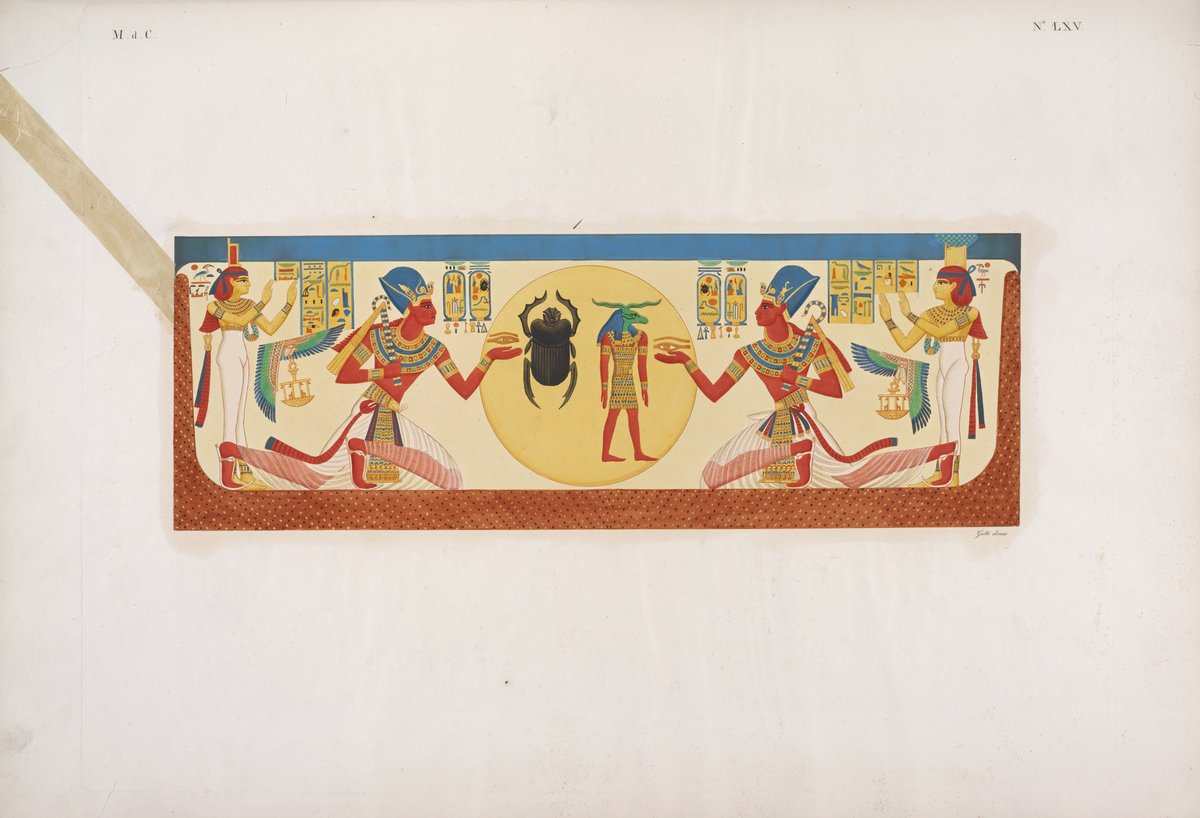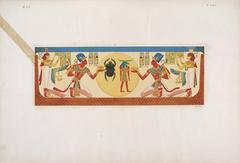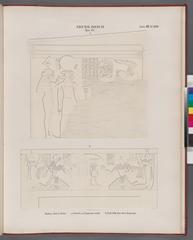
KV18 Visiting Hours, Tickets, and Complete Guide to Luxor Historical Sites
Date: 14/06/2025
Introduction to KV18 and Its Historical Importance
Nestled in the legendary Valley of the Kings near Luxor, Egypt, KV18 stands as a compelling testament to the waning years of Egypt’s New Kingdom. Attributed to Pharaoh Ramesses X (circa 1111–1107 BCE), this tomb is notable for its unfinished state—a simple, undecorated, 43-meter-long corridor carved into limestone with no completed burial chamber. Unlike the elaborate royal tombs that captivate many visitors, KV18’s stark simplicity offers valuable archaeological insights into the socio-political and economic challenges of the late 20th Dynasty. Its incomplete state not only reflects the historical circumstances of Ramesses X’s reign but also provides rare information about ancient tomb construction and workforce logistics.
Although KV18 is generally closed to the public due to its unfinished condition and conservation efforts, its place in the Valley of the Kings is significant. Understanding KV18 enriches the broader narrative of ancient Egyptian funerary traditions and the evolution of royal tomb architecture. This guide consolidates essential information on KV18—including its historical context, archaeological importance, visitor access details, practical travel tips for the Valley of the Kings, and recommendations for nearby attractions. For the most current archaeological findings and official updates, consult resources such as the University of Basel Egyptology project and the Egyptian Ministry of Tourism and Antiquities.
Contents Overview
- Discover KV18: A Unique Luxor Historical Site
- Historical Context of KV18
- The Valley of the Kings and the New Kingdom
- KV18 and Pharaoh Ramesses X
- Visiting KV18: Practical Information
- Visiting Hours and Tickets
- Accessibility and Tips
- Guided Tours and Photography
- Nearby Attractions
- Archaeological Insights
- Architectural Features and Significance
- Epigraphic and Material Finds
- Conservation Efforts
- Frequently Asked Questions (FAQ)
- Plan Your Visit and Explore More
- Summary of Key Facts
Discover KV18: A Unique Luxor Historical Site
KV18 provides a fascinating window into the challenges and realities of late New Kingdom tomb construction. For historians, scholars, and curious travelers, learning about KV18 deepens appreciation for the Valley of the Kings’ diversity, revealing a side of Egypt’s heritage often overshadowed by more ornate tombs.
Historical Context of KV18
The Valley of the Kings and the New Kingdom
The Valley of the Kings served as the burial ground for Egypt’s New Kingdom pharaohs and elite officials from the 16th to 11th centuries BCE. This secluded desert valley, situated on Luxor’s west bank, houses over 60 tombs, each labeled with a “KV” designation (The Travel Tinker). The architectural evolution of these tombs reflects the shifting fortunes, religious beliefs, and political climate of their respective eras.
KV18 and Pharaoh Ramesses X
KV18 is attributed to Ramesses X, the ninth ruler of the Twentieth Dynasty. His brief and troubled reign was marked by instability and resource shortages, factors evident in the unfinished nature of his tomb. KV18 consists solely of a 43-meter-long corridor with no decorative elements or burial chamber, setting it apart from its more elaborate neighbors (University of Basel Egyptology).
Visiting KV18: Practical Information
Visiting Hours and Tickets
- Current Status: As of 2025, KV18 remains closed to the general public due to conservation concerns and its incomplete state. Official access is generally restricted to researchers, but the exterior location can be viewed from the main paths in the Valley (PlanetWare).
- Valley of the Kings Hours: The Valley is open daily, typically from 6:00 AM to 5:00 PM, with slight seasonal variations.
- Tickets: Standard admission includes entry to three tombs of your choice from a rotating selection. Additional tickets are required for special tombs, but KV18 is not included in regular or special access due to its closure. Tickets can be purchased onsite or online via the Egyptian Ministry of Tourism and Antiquities.
Accessibility and Tips
- The tomb’s corridor is uneven and narrow, making it inaccessible for visitors with mobility challenges.
- Main Valley paths are paved, but all tombs involve walking on sloped and uneven surfaces.
- Early morning visits are recommended to avoid crowds and heat.
Guided Tours and Photography
- Licensed guides are available and highly recommended for context and historical interpretation, even for tombs not open to entry.
- Photography is permitted in most open tombs with the purchase of a photography pass; flash is not allowed to protect the site (The Discoveries Of).
Nearby Attractions
- Explore accessible tombs such as KV15 (Seti II) or KV47 (Siptah) for a contrast to KV18’s simplicity.
- Deir el-Medina, the ancient village of tomb workers, offers unique insights into the people who built the Valley’s tombs.
Archaeological Insights
Architectural Features and Significance
KV18’s straight, undecorated corridor is a stark example of the economic and political decline at the end of the New Kingdom. Its unfinished design and lack of royal burial artifacts provide a rare glimpse into the realities faced by the dynasty’s final rulers (University of Basel Egyptology).
Epigraphic and Material Finds
Pottery sherds, ostraca, and graffiti found in KV18 have shed light on the daily lives and organization of the ancient workforce. These modest finds contrast with the rich funerary artifacts of earlier tombs but are invaluable for understanding the socio-economic climate of the period.
Conservation Efforts
Ongoing conservation projects focus on stabilizing the tomb, documenting visitor graffiti, and managing environmental threats. These initiatives, led by Egyptian authorities and international partners, aim to preserve KV18 for future research.
Frequently Asked Questions (FAQ)
Q: Is KV18 open to visitors?
A: No, KV18 is currently closed to the public. It can only be accessed by researchers or through special arrangements.
Q: What are the Valley of the Kings’ visiting hours?
A: The Valley of the Kings is open daily, typically from 6:00 AM to 5:00 PM, but hours may vary seasonally.
Q: How can I buy tickets?
A: Tickets for the Valley are available at the entrance or online. KV18 is not included in any ticket package.
Q: Are guided tours available?
A: Yes, licensed guides are available and highly recommended for a richer understanding of the Valley’s history.
Q: Can I take photos inside KV18?
A: KV18 is closed, but for other tombs, a photography pass is required; flash photography is prohibited.
Plan Your Visit and Explore More
To make the most of your trip to Luxor and the Valley of the Kings:
- Prepare in Advance: Verify which tombs are open and check ticketing requirements before your visit.
- Hire a Guide: Gain in-depth insights into the Valley’s history and the unique context of tombs like KV18.
- Download Digital Resources: The Audiala app offers audio guides and updates on Egypt’s historical sites.
- Stay Updated: Follow official channels and research projects for news on tomb accessibility and site conservation.
Summary of Key Facts
- Location: Valley of the Kings, Luxor
- Pharaoh: Ramesses X (c. 1111–1107 BCE)
- Structure: Unfinished, straight corridor, 43 meters long
- Decorations: None; undecorated
- Access: Closed to the public; visible from main Valley pathways
- Significance: Illustrates late New Kingdom economic and political challenges
For the latest research, visit the University of Basel Egyptology project page.
Luxor Historical Sites: Visiting Hours, Ticketing, and Responsible Tourism
Luxor, known as ancient Thebes, offers an unparalleled concentration of archaeological wonders. Key sites such as the Valley of the Kings, Karnak Temple, and Luxor Temple each have distinct visiting hours and ticket requirements:
- Valley of the Kings: 6:00 AM–5:00 PM daily (last entry an hour before closing)
- Karnak Temple: 6:00 AM–5:30 PM
- Luxor Temple: 6:00 AM–10:00 PM
Tickets can be bought onsite or via official portals. Special tombs (like Tutankhamun’s) require additional admission (thetravel.com).
Cultural Etiquette and Responsible Tourism
- Dress Modestly: Cover shoulders and knees, especially at religious and archaeological sites (privatetoursinegypt.com).
- Support Local Businesses: Choose locally owned accommodations and guides.
- Respect Conservation Rules: No touching artifacts or using flash photography.
- Engage with Local Culture: Simple greetings and learning a few Arabic phrases go a long way (trippvibes.com).
- Minimize Environmental Impact: Use refillable water bottles and avoid single-use plastics (responsibletravel.com).
Essential Travel Tips
- Best Time to Visit: October–April (cooler temperatures)
- Transportation: Taxis, buses, and boats are available; walking and cycling are also good options (privatetoursinegypt.com).
- Safety: Use standard precautions and be mindful of surroundings, especially after dark (trippvibes.com).
- Accessibility: Many sites have limited facilities for visitors with disabilities; inquire in advance.
Frequently Asked Questions (FAQ) – Luxor
Q: How do I buy tickets for Luxor’s major sites?
A: Tickets are available onsite and online via official tourism websites.
Q: Are cameras allowed inside tombs?
A: Mobile phones are generally permitted; professional equipment requires a permit.
Q: How should I dress?
A: Modest attire is recommended; women should carry a scarf for mosque visits.
Q: Is Luxor safe for tourists?
A: Yes, with standard precautions. Use reputable guides and avoid isolated areas at night.
Conclusion
KV18, though rarely accessible, represents a vital piece of Egypt’s rich archaeological heritage. Understanding its context helps visitors appreciate the diversity of the Valley of the Kings and the realities faced by the last pharaohs of the New Kingdom. Whether or not you can visit inside, learning about KV18 deepens your engagement with Luxor’s ancient wonders. By respecting local customs, supporting responsible tourism, and staying informed through official channels, you help preserve Egypt’s treasures for generations to come.
To further enhance your visit, download the Audiala app for audio tours, updates, and expert guides. Follow us on social media for the latest news on Luxor’s historical sites.
Sources and Further Reading
- University of Basel Egyptology
- Egyptian Ministry of Tourism and Antiquities
- PlanetWare – Valley of the Kings
- PrivateToursInEgypt
- The Travel Tinker – Valley of the Kings Guide
- The Discoveries Of – Valley of the Kings
- The Orange Backpack – Visiting Valley of the Kings
- trippvibes.com – Egypt Culture and Customs
- responsibletravel.com – Responsible Tourism in Egypt
- thetravel.com – Tips for Visiting the Valley of the Kings
































































